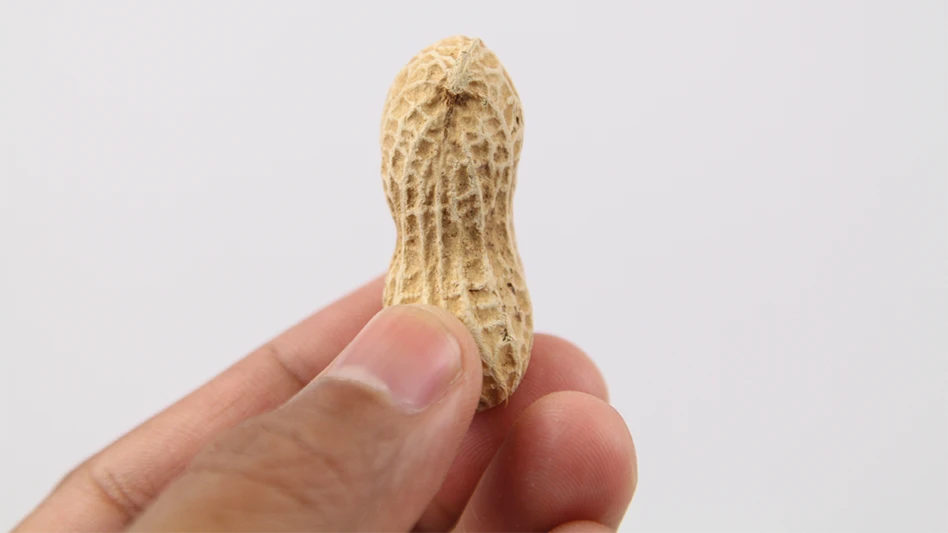You’ve sent your product sample to a contract laboratory for testing, and unless there are questions or problems, you probably will not think a lot more about that sample until you receive the test results. But what exactly happens to your sample between the time it leaves your plant and results are returned?
To find out, we visited ABC Research in Gainesville, Fla., and RTech Laboratories of Land O’Lakes in Minneapolis, Minn., to follow a sample from its arrival at the laboratory to results sent back to you.
FROM PLANT TO LAB. Samples may be transported from a manufacturing plant to a lab by various methods, most often depending on the stability of the sample, turn-around time needed and specifications of the lab or requesting plant. In fact, no sample should ever be sent if the plant has not first communicated with the receiving lab.
Most laboratories today have Web sites on which they post forms and instructions for sample submission. In addition to this, placing a call to the laboratory prior to a first transaction for notification and any additional instruction is simply good business.
IN THE DOOR. Once your sample arrives at the lab, the first step is its recording, verification and labeling. Information from the sample submission form is logged into the system and the sample is labeled with identifiers such as point of origin; date and time received; any special handling, safety or stability requirements; and the testing to be conducted on it, said Julie Honsa, QA manager of RTech. The sample also is given a unique ID, which then stays with it throughout its lab journey.
At this stage, the lab also takes a verification step, said Victor Kowalski, ABC’s quality assurance manager. This step verifies that the sample is what the form said it is, and is particularly important if multiple samples were submitted together.
PRE-TEST PREPARATION. Once logged in and verified, the sample is put into secure, environmentally appropriate and controlled storage to await its turn for any necessary sample preparation, such as enrichment and portion cutting, and the testing itself. Whether the storage area is refrigerated, deep-freeze or standard shelving, the temperatures of the storage areas are continuously controlled and turn-around time for each sample carefully monitored.
Quick turn-around time can be a critical component for some testing, but even when it is not required, speed has become the way of business today. At ABC, accuracy is, of course, central but efficacious speed is also of critical concern. “We prefer to use the fastest method for a particular matrix,” Kowalski said.
TESTING. The samples going through the laboratory can veer off in many directions at this point, determined by the type of test called for. Contract laboratories conduct innumerable tests on a daily basis, with microbiological and chemistry testing the main types for most plants. Each type of test has its own preparation, testing and follow-up requirements, as well as its own separate testing area to decrease any chance of cross contamination — particularly in the arena of microbiological testing, which is a primary food-product testing area.
MICROBIOLOGICAL TESTING. ABC breaks microbiological testing into three areas: 1) analytical, which includes pathogen analysis, spoilage analysis and water testing; 2) special microbiology, such as microbial toxin testing, microorganism identification, commercial sterility/spoilage testing, specified risk material (GFAP) testing, and meat species testing; and 3) research microbiology, including challenge studies, process validation and shelf-life and stability studies.
While tests are kept segregated to avoid cross contamination, ABC’s microbiology lab may be running 10 to 20 studies at the same time, said ABC Technician Kelly McFarland, including everything from pathogen testing of a day or two to shelf-life studies of a year or more. The lab does a lot of Listeria testing for USDA compliance, she adds, but the range of work taking place in this lab can vary dramatically from day to day and week to week.
But even with the vast variety of work, ABC technicians are trained and experienced in all areas in which they work — a point validated by the laboratories’ A2LA accreditation — and they provide consultation for customers as well as testing. “We know what to test for,” McFarland said. “We are very familiar with the regulations, so we can help (customers) with whatever quality assurance or quality control things they need.”
SAMPE SEPARATION. The microbiology lab is also the area with the most potential for cross contamination, because it is here where the microbiological testing media and agars are prepared — using active pathogens. “You have to run positive controls for everything you do,” Honsa said, “so you have to be very careful to not cross contaminate samples.” This is the reason that RTech maintains separate rooms for its various testing — “so there is separation of activity” — and is a key reason for plants’ use of contract labs, she adds. “They don’t have to keep pathogens in their plants.”
PREVENTIVE PROCEDURES. In addition to separation by room, RTech maintains preventive procedures to reduce any chance of cross contamination, including:
- putting on clean gloves each time a new test is run
- changing lab coats after setting up a Salmonella test
- setting positive controls last
- having only one container open at any time.
One thing that processors always should remember is that any change in the plant should spark at least consideration of testing.
“People do work on their plumbing and don’t realize that they have to do the (water) test again,” said ABC Lab Technician Kate Johnson, who conducts water microbiological testing. The maintenance work may have introduced a contaminant into the pipeline or changed the structure so as to change the tests’ outcome.
CHEMISTRY TESTING. Chemistry testing, which may include nutritional analysis, additives, pesticide residue, and toxins can be an area most affected by consumer and industry trends — such as recent surges in testing for nutritional labeling, trans fats and melamine. Because it also may involve the effects of product properties or ingredients, sensory testing can fall under this analysis area.
Whether trying out a new formulation or an entirely new product, food manufacturers often will request sensory testing to determine consumer preference. While such testing most often is related to taste, a sensory test may involve taste, smell, visual or even touch.
If you worked at ABC or RTech, you would get periodic chances to do such tastings. With in-house sensory testing areas with individual booths, when the call goes out for volunteers, anyone who is available at the time can head to the testing area and take part in the panel (which included bacon strips the day we visited). For larger, more in-depth projects, however, the lab will also use trained panels and meet off-site.
RESULTS. While following a sample through the lab and understanding the various routes it may take is an educational experience, it is really the result and its validity that are of most interest to the submitting plant. Both ABC and RTech are ISO 17025 accredited.
“This accreditation ensures that samples are handled within quality system requirements,” Honsa said, and that accurate, reliable results are achieved through standard-reference methods.
With today’s electronic capabilities, results generally can be reported and reviewed in a variety of formats, including 24/7 viewing through a secure Internet site. In addition, almost all labs are able to send reports by e-mail, fax or standard postal mail.
The author is staff editor of QA magazine.

Explore the August 2007 Issue
Check out more from this issue and find your next story to read.
Latest from Quality Assurance & Food Safety
- Nestlé Opens Arizona Beverage Factory and Distribution Center
- Ingredion Invests $100 Million in Indianapolis Plant to Improve Efficiency, Enable Texture Solutions Growth
- Eagle Unveils Redesigned Pipeline X-ray System
- USDA Invests Up To $1 Billion to Combat Avian Flu, Reduce Egg Prices
- Washington Cats Confirmed with HPAI as Investigation into Contaminated Pet Food Continues
- USDA Confirms Bird Flu Detected in Rats in Riverside
- Kyle Diamantas Named FDA’s Acting Deputy Commissioner for Human Foods
- QA Exclusive: Food Safety Leaders React to Jim Jones’ Departure, FDA Layoffs





